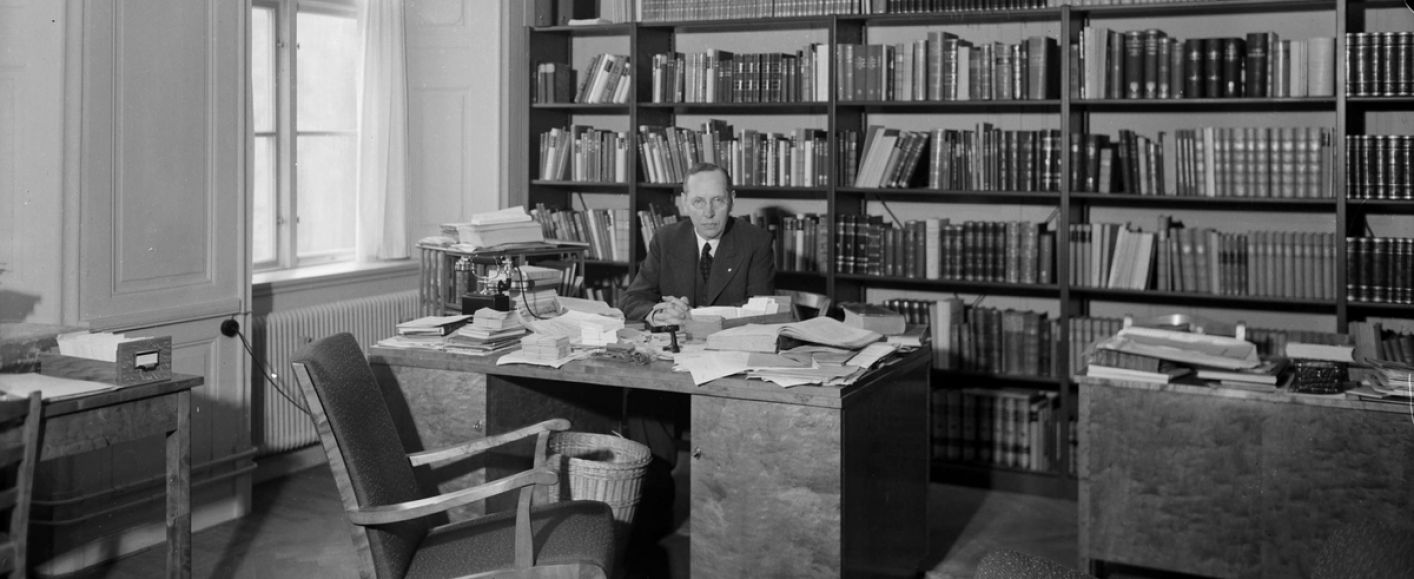The initiative to establish the Academy was taken by Jöran Sahlgren, Professor of Scandinavian Toponymy at Uppsala University. Sahlgren was a clergyman’s son from the province of Närke, born in 1884. His PhD thesis was on the nature names of Skagerhult parish (1912). For many years he was the editor of the Swedish Academy Dictionary (Svenska Akademiens ordbok) in Lund. In 1929 he became Professor of Scandinavian Languages in Lund, but the following year he was called to Uppsala to take up a chair in Scandinavian Toponymy, newly established for him. Sahlgren’s scholarly interests extended far beyond place-name research, however, which was no doubt a major factor behind his initiative, in connection with the tercentenary of Gustavus Adolphus’s death, to create a new forum for research in the various disciplines of cultural history, in the form of an Academy.
The idea gained the support of one of the most authoritative figures of the university, Karl Gustaf Westman, a postmaster’s son from the province of Östergötland, born in 1876. Westman initially engaged in historical research, but later became a professor of legal history. A cabinet minister in the right-wing government during the First World War, he subsequently became a leading politician in the Farmers’ League (Bondeförbundet).
On 6 November 1932, a meeting was held at Stadshotellet in Uppsala, at which the decision was taken to found the Gustavus Adolphus Academy for Folklife Studies, under Westman’s presidency. In 1942 the Academy was granted royal status and, following minor adjustments to its name, it is now known as the Royal Gustavus Adolphus Academy for Swedish Folk Culture.
Photograph of Jöran Sahlgren taken by Göran Sundgren, Uppland Museum.
